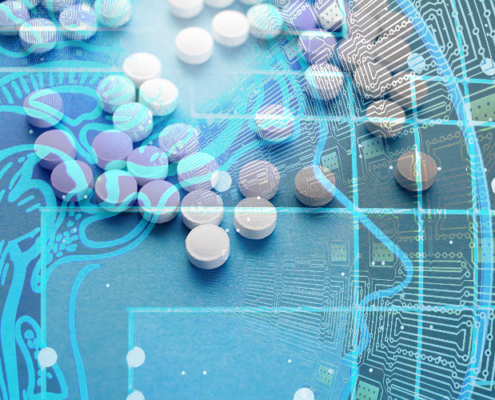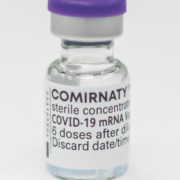Confidence and caution as AI predicts drug safety
Confidence and caution as AI predicts drug safety
Published: Nov 03, 2023
By Vijay Shankar Balakrishnan
BioSpace
When Alex Zhavoronkov launched Insilico Medicine in 2014, the company’s main focus was on using artificial intelligence as an alternative to animal testing for pharmaceutical research and development. Using deep learning, an advanced form of machine learning, the company aimed to predict how drug compounds would affect cells and what the side effects might be.
Fast forward to 2023, and Insilico has evolved into an end-to-end AI-driven biotech company, deploying AI from lead and target discovery through clinical trials. Insilico’s Pharma.AI platform, backed by $2 trillion in machine-readable research data, contains over 40 generative algorithms. The firm uncovered the intracellular “Target X” for idiopathic pulmonary fibrosis (IPF) using AI analysis, and subsequently developed a novel small molecule inhibitor, INS018_055, which has shown potential in preclinical studies for improved fibrotic disease treatment with fewer side effects. In August, it became the first drug fully generated by AI to enter a Phase II trial.
Making up the Pharma.AI platform, Insilico’s PandaOmics for target discovery, Chemistry42 for drug design and InClinico for clinical trial prediction “work together in an end-to-end feedback loop,” Zhavoronkov explained.
“However, safety of the target is accounted for at two different stages,” said Alex Aliper, president of Insilico. First, PandaOmics uses relevant existing information to find the safest and most promising therapeutic targets, while Chemsitry42 enables multi-parametric optimization of the molecules.
The latter includes ADMET predictors, a machine learning (ML) software tool, to assess how the body processes the generated molecule, covering aspects like absorption, distribution, metabolism, elimination and toxicity, as well as enzyme inhibition like cytochrome P450, which is involved in drug side effects. “Chemistry42 also has around 500 medicinal chemistry filters that filter out compounds with structural motifs known to be toxic,” Aliper told BioSpace.
“Our initial studies have indicated that INS018_055 has the potential to address some of the limitations of current IPF therapies—including unpleasant side effects—and we are hopeful that the data from our current and future clinical trials will confirm this belief,” Zhavoronkov said.
Schrödinger’s Selectivity
New York- and Germany–based Schrödinger focuses on the safety of small-molecule drugs. Its platform blends AI/ML efficiency with physics-based accuracy, enabling its specialists to design and synthesize desired molecules, thus reducing time and costs.
“In some cases, the clinical candidate has been selected after synthesizing just 100 molecules instead of the thousands made using traditional design approaches,” said Robert Abel, the company’s chief computational scientist.
In order to minimize drug side effects, Schrödinger uses its platform to design molecules that bind potently and selectively to the intended protein target versus related proteins, explained Karen Akinsanya, president of R&D, therapeutics at Schrödinger. “This approach allows us to find molecules that might provide a therapeutic benefit without binding to hERG, CYPs, PXR and other well-known off-target proteins that are well known to cause side effects,” she told BioSpace.
The hERG gene is crucial for heart rhythm regulation; CYPs, or cytochromes, are liver enzymes that metabolize drugs, potentially causing interactions; PXR, a cellular protein, helps process drugs and foreign substances by influencing enzyme production. These factors are vital in drug development and medication safety, Akinsanya said. “Protein structures, including binding sites, are crucial for our computational platform, but starting a drug discovery project often lacks enough experimental data for naive AI approaches due to the vast chemical space, which exceeds available data,” she explained. “Schrödinger addresses this by using advanced physics-based calculations to efficiently generate the needed binding affinity datasets.”
Both Insilico and Schrödinger use AI to discover drugs that they claim would be safer than those hunted down using non-AI methods. Big pharma players also entered this space a few years ago, either directly or by partnering with tech companies or incubating smaller AI-based startups. AstraZeneca collaborated with BenevolentAI to discover new targets and predict potential drug side effects by analyzing scientific literature, clinical trial data and biomedical databases.
Novartis employs AI for intelligent molecular design to develop safe molecules for patients. By analyzing various data sources, including chemical properties and biological interactions, the company aims to identify compounds with lower risk profiles. Meanwhile, Merck KGaA has been busy inking AI deals aimed at making safer medicines. In 2018, Merck struck an alliance with Canadian company Cyclica that uses the latter’s cloud-based technology to uncover new drug targets and identify off-target adverse effects. Then, in February 2022, the company announced a partnership to leverage Quris’ BioAI safety prediction platform, which uses miniaturized human tissues on a chip, nano-sensing and machine learning to predict the safety of drug candidates in humans.
Confidence and Caution
AI’s potential in drug development is often recognized with respect to saving time and money. However, its increasing deployment in drug safety studies elicits both confidence and caution from industry and researchers, according to experts such as Andreas Bender, a chemoinformatics researcher at the University of Cambridge, U.K.
Bender, who has been working with AstraZeneca on computational drug safety studies, said there is often a “tech push and a science pull” about AI. Although data collection becomes easier, understanding the data’s signal is more critical, he told BioSpace. “We have quite a lot of data, but we don’t understand much of that pile, like how certain biological mechanisms relate to a phenotype,” he said. Using AI to identify potential side effects is “like [finding] a needle in a haystack.”
Drug safety lies not just in how the molecule has been designed but also in other factors. For example, Bender explained, the use of excipients—the inert or slightly active substances used in formulating a drug compound into a drug product—and other additives can affect a drug’s safety profile, as can patient biology and environmental stimuli.
“There are mechanistic side effects that you know where they come from and what to do about, but there are also idiosyncratic side effects that you don’t know where they come from, so you cannot predict such adverse reactions using AI,” he said. Hence, along with machine learning, his group’s research also integrates chemical biology and human physiology to predict drug toxicity.
There are multiple other challenges, Bender continued, such as how different countries define specific side effects. “How do we translate, then, the [computational predictions] into decision-making?” he asked. “That integration is often where the real problems come from, and that’s why you always need to integrate computers with experiments—[to] follow up on predictions.”
Still, he said, AI-based predictions of drug safety could improve the drug development process. “It is, rather, about making better decisions. I’m not saying nothing works, but also not that everything works; just . . . that finding meaningful signals in drug safety prediction is statistically more difficult and depends on several [kinds of] data, so promises must be cautious and realistic.”
Source: BioSpace









